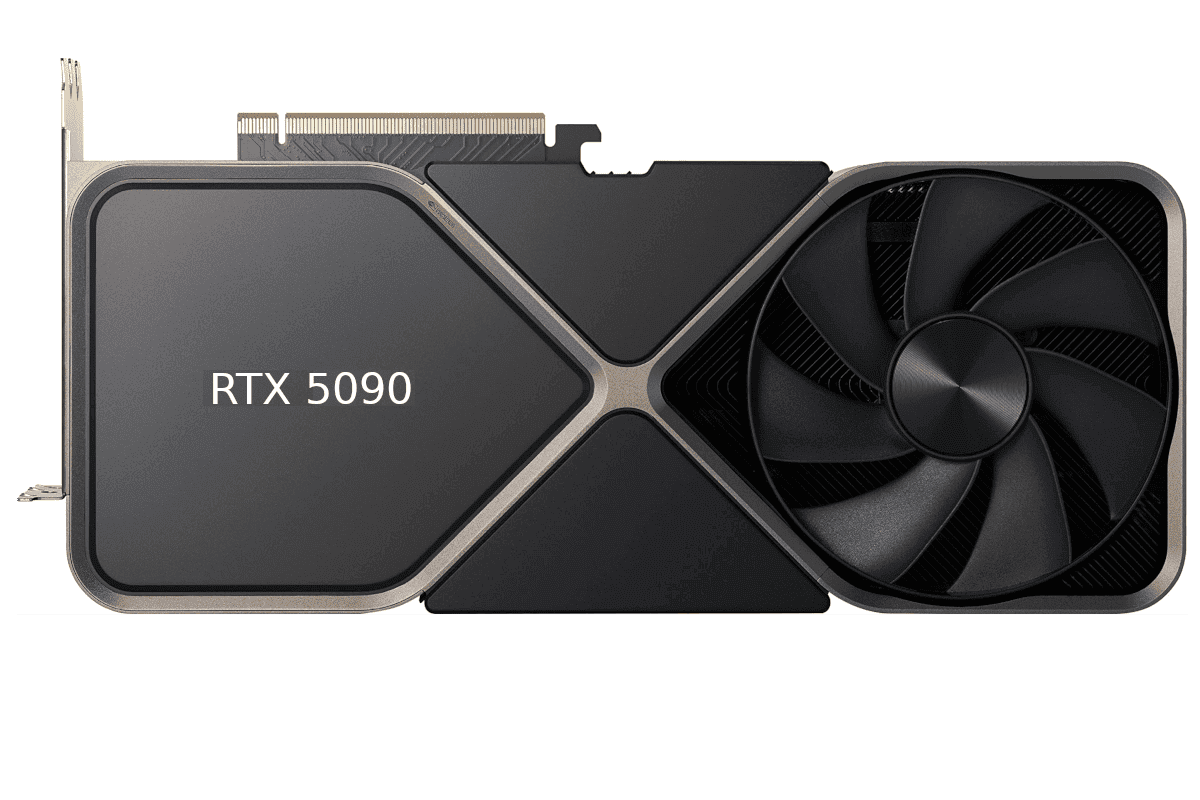After years of waiting, we’re finally ready for the next generation of video cards. And all 3 of the major manufacturers will be showing off their products over the span of about 30 days. Intel is expected to launch their Battlemage GPUs in December 2024, jumping ahead of competitors with hopes of drawing attention to their lineup from their 3rd place position. While that event is expected to get a lot of attention, most people will be waiting for CES 2025 for the real “heavy-hitters” in the GPU industry: NVIDIA and AMD.
Both are currently rumored to be introducing their new graphics cards in early January 2025 with the products being released to gamers and tech enthusiasts over the course of the first quarter 2025. AMD will be launching their Radeon 8000 series of graphics cards and NVIDIA will be launch the RTX 50 series at the show and it will be a battle of the heavyweights.
Most attention will likely be on the GeForce RTX 50 series, which promises to push the boundaries of gaming performance further than we have ever seen. The RTX 50 series, codenamed “Blackwell,” will succeed the current RTX 40 series and is set to offer significant improvements in graphics processing power. Anticipation is building for the flagship RTX 5090 model, which is rumored to deliver unprecedented performance for high-end gaming and professional applications. Additionally, lower-tier models such as the RTX 5080 and the 5070 are also in development and we expect the 5080 to be unveiled at the show (with a high chance the 5070 will as well).
Nvidia GeForce RTX 50 Series: A Closer Look
The Nvidia GeForce RTX 50 series is generating a lot of excitement in the tech world. It’s rumored to be a game-changer, with significant improvements in performance and power efficiency. We’re expecting an official announcement from Nvidia soon, possibly at CES 2025 in January. This is less than two months away, and the anticipation is building!
What to Expect
The RTX 50 series will likely feature a new architecture, possibly called “Blackwell.” This architecture is expected to deliver a major leap in performance compared to the current RTX 40 series. We might see ray tracing advancements and DLSS enhancements as well. These upgrades could significantly improve image quality and gaming performance.
However, there are rumors that these powerful GPUs will consume more power. Some sources suggest they could exceed 450 watts. This means they’ll need robust cooling solutions to handle the increased heat output. It’s a trade-off for the expected performance gains.
Rumored Specs
While Nvidia hasn’t released official specs, leaks and rumors provide some clues about what to expect. Keep in mind that these are just estimates and could change.
| Model | CUDA Cores | Boost Clock (GHz) | Memory (GB) | Memory Type | TDP (W) |
|---|---|---|---|---|---|
| RTX 5090 | 18,432 | 2.8 | 24 | GDDR7 | 450+ |
| RTX 5080 | 14,080 | 2.6 | 20 | GDDR7 | 400+ |
| RTX 5070 | 10,752 | 2.4 | 16 | GDDR7 | 350+ |
These specs suggest a significant jump in CUDA core count and memory capacity compared to the RTX 40 series. The use of GDDR7 memory could also provide a major boost in memory bandwidth, leading to smoother gameplay and faster rendering times.
Release Date and Pricing
Although Nvidia hasn’t confirmed a release date, rumors point to a January 2025 launch, possibly at CES. Pricing is still unknown, but it’s likely to be in line with previous high-end GPU launches. The top-tier RTX 5090 could be priced around $1500 or higher, with the RTX 5080 and RTX 5070 following at lower price points.
Stay tuned for more updates as we get closer to the expected launch date. The Nvidia GeForce RTX 50 series promises to be an exciting development in the world of PC gaming and graphics technology.
Key Takeaways
- Next-gen Nvidia GPUs are expected to launch in early 2025
- The RTX 5090 aims to set new performance benchmarks
- Nvidia continues to innovate with each GPU generation
Historical Context and Evolution
Nvidia’s GPU evolution has seen significant advancements in performance, architecture, and features. Each generation brings improvements in speed, efficiency, and capabilities for gamers and professionals alike.
From Ampere to Blackwell
The Ampere architecture marked a leap forward for Nvidia’s GPUs. It introduced ray tracing and AI capabilities to consumer graphics cards. The RTX 30-series set new standards for gaming performance.
Ada Lovelace followed, powering the RTX 40-series. This architecture brought enhanced ray tracing and more efficient AI processing. It also introduced DLSS 3, improving frame rates in supported games.
Blackwell, the expected architecture for the RTX 50-series, aims to push boundaries further. It may offer better ray tracing, more powerful AI features, and improved energy efficiency.
Comparative Performance
Each GPU generation has seen substantial performance gains. The RTX 4090, Nvidia’s current flagship, offers up to twice the performance of its predecessor in some tasks.
RTX 50-series cards are expected to continue this trend. They may provide:
- Faster ray tracing
- More efficient DLSS
- Higher frame rates at 4K and 8K resolutions
The jump from GDDR6 to GDDR7 memory could also boost bandwidth, enhancing overall GPU performance.
Price Trends and Consumer Expectations
GPU prices have risen significantly over recent generations. The RTX 4090 launched at $1,599, a substantial increase from previous top-tier cards.
This trend has raised concerns among consumers about affordability. Many hope the RTX 50-series will offer better value, especially in mid-range options.
Expectations for the new series include:
- More competitive pricing for mid-range cards
- Better performance-per-dollar ratios
- Improved availability at launch
Balancing performance gains with reasonable pricing will be crucial for Nvidia to meet consumer expectations with the RTX 50-series launch.
Technical Specifications and Features
The upcoming Nvidia GeForce RTX 50 series promises significant improvements in GPU architecture, memory technology, power efficiency, and AI capabilities. These advancements aim to push the boundaries of gaming and content creation performance.
GPU Architecture and Blackwell Chip
The RTX 50 series will likely use Nvidia’s new Blackwell architecture, built on TSMC’s 4Np process. This chip design is expected to bring major gains in performance and efficiency. The RTX 5090 may feature over 18,000 CUDA cores, a substantial increase from its predecessor.
Lower-tier cards like the RTX 5080 and 5070 will likely have fewer cores but still offer notable improvements. The new architecture could enable higher clock speeds and better performance per watt.
Memory Technology and Interface
Nvidia’s next-gen GPUs are rumored to use GDDR7 memory, offering faster speeds and improved bandwidth. The RTX 5090 might feature a 512-bit memory interface, while the 5080 and 5070 could use 256-bit interfaces.
This combination of new memory tech and wider interfaces could result in significantly higher memory bandwidth. The increased bandwidth would be especially beneficial for 4K and 8K gaming, as well as data-intensive tasks.
Cooling, TDP, and Power Draw
The RTX 50 series is expected to push performance boundaries, which may result in higher power consumption. The flagship RTX 5090 could have a TDP of 600W or more.
Nvidia will likely implement advanced cooling solutions to manage heat output. Lower-tier cards like the RTX 5080 and 5070 may have more modest power requirements, balancing performance and efficiency.
AI and Ray Tracing Capabilities
Nvidia is set to enhance its AI and ray tracing technologies with the RTX 50 series. Improved RT cores could lead to more realistic lighting and shadows in games.
DLSS technology may see further advancements, potentially offering better image quality and performance boosts. These upgrades could make 4K and 8K gaming more accessible, even on mid-range cards like the RTX 5070.







